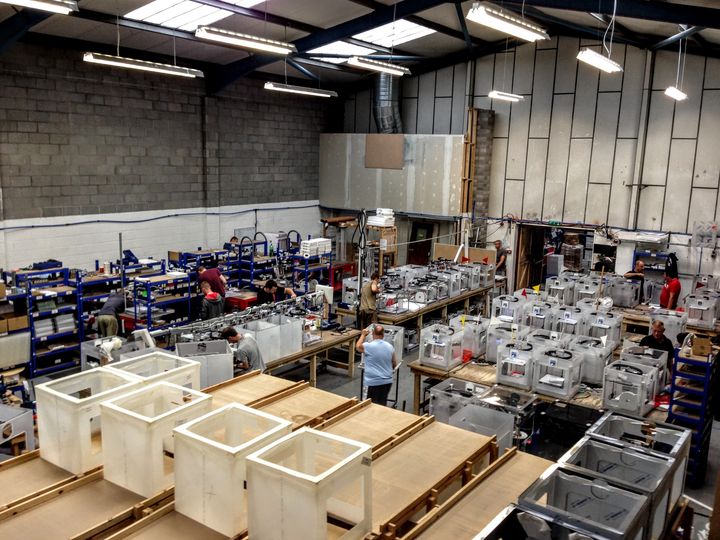
There could be a great deal of unexpected problems in coming months for 3D printer manufacturers.
Thus far in the pandemic 3D printer manufacturers generally have not been suffering. They have continued to produce machines at more-or-less normal rates, and many companies have even seen an upswing.
That upswing is the result of massively disrupted supply chains. Manufacturers suddenly found their cheap, just-in-time streams of parts broken. And, like an airport when things go wrong, there are huge delays and confusion. While just-in-time manufacturing is financially efficient, it’s also incredibly fragile.
The pandemic smashed those supply chains.
Broken Supply Chains
Manufacturers then shifted to using 3D printers as an alternative source for some parts, as they were desperate and 3D print services and devices were readily available in most regions. This bypassed the broken supply chains and will provide a boost to 3D printing that will last forever.
But there’s a problem. The 3D printer manufacturers themselves are also subject to supply chain problems. They need many components to build a 3D printer, including PCBs, stepper motors, cables and connectors, display panels, and much more. All of these were disrupted during the early stages of the pandemic.
However, it’s not like turning off the tap and finding no water; supply chains are long sequences of events that take months to traverse. Precision planning ensures (in normal times) that parts end up where they’re needed at the right time. But a disruption at the source can take months to ripple down the line to the manufacturers receiving parts. Parts being shipped are still shipped. But the next ship might not be loaded. Or a shock storm might shutter major plastics plants. For example.
Forward-thinking 3D printer manufacturers foresaw this scenario and correctly secured stores of parts in advance of the general collapse of part availability. For example, Prusa Research announced last year they had nabbed a huge supply of parts that they’re likely still working through.
However, component manufacturers have yet to catch up, and the situation is worsening as demand rises due to stockpiles running low. 3D print aficionado Richard Horne recently wrote:
“Everyone in electronics design and manufacturing is bracing for a rough year of component shortages. Honestly if you didn’t secure key components back in Dec 2020 you have ~10 months wait for delivery. Many FPGA’s, ARM micro’s and even electro-mechanical components at 40+ weeks.
Severe electronic component shortages fuel increased pricing for stock and that also causes a big spike in fake and counterfeit parts entering the supply chain. this will both compound problems and cause further damage for years. It’s really quite a dire situation.”
What does this mean?
3D Printer Manufacturer Failures
It means that it’s likely some 3D printer manufacturers might have to shut down their assembly lines at some point in the near future, if they have not secured alternative part sources.
Who might these companies be? It could be any of them, as the normal factors may not apply. A company that produces fewer machines per month might find it easier to source fewer parts than a larger manufacturer. A manufacturer might require an uncommon component that is simply not available from any supplier.
We don’t yet know which companies will encounter severe supply shortages, and which ones somehow managed to apply whatever means necessary supplies of needed parts.
The bottom line here is that in some months we may unexpectedly see several 3D printer manufacturers quietly indicate they are having “shipping delays” that seem to continually extend. There may be layoffs at assembly plants, and that’s significant as starting them back up will be challenging.
Eventually, we may even see some companies, perhaps well-regarded companies, simply shut operations as funds run out due to lack of sales.
Which will be the first?
